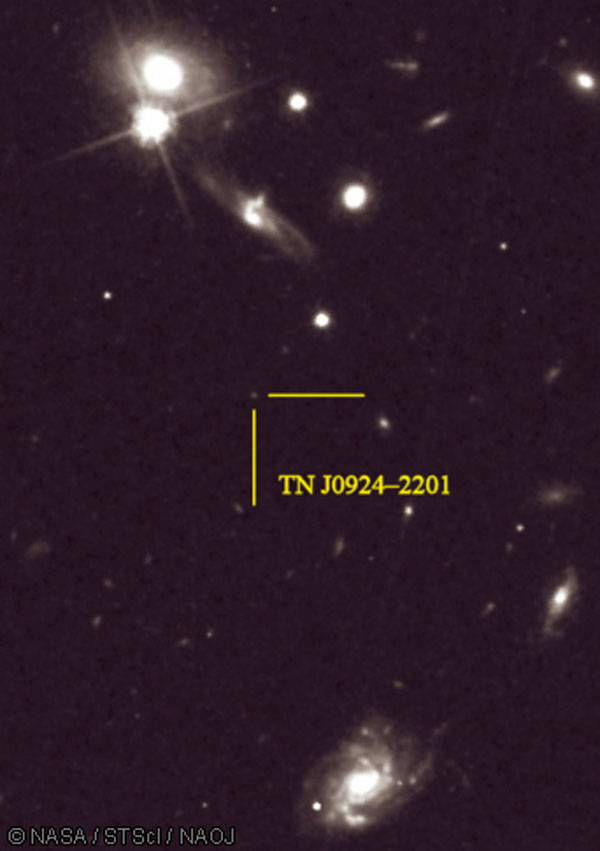Key Takeaways:
Our universe began with the Big Bang about 13.7 billion years ago. Hydrogen and helium were the only elements in this newly created universe. If these were the only elements, when and how did other elements, the so-called “metals” heavier than hydrogen and helium, originate? The answer lies in the stars shining in the night sky. Supernovae phenomena as well as nuclear fusion in stars have given rise to the variety of elements that exist today. Chemical enrichment of the universe has progressed through the birth and death of numerous stars over an immense cosmological timescale. Understanding the chemical evolution of the universe reveals a lot about the evolution of the universe itself and the sources of our human chemistry.
Astronomers have studied chemical evolution by measuring the metallicity of astronomical objects at various redshifts. Metallicity refers to the abundance of elements heavier than hydrogen and helium that occur in celestial objects. Redshifts relate to how much a wavelength has been stretched by the expansion of the universe; the greater the redshift value (z) for a galaxy, the more distant it is in time and space. Therefore, measurement of the spectra of galaxies with greater redshift values provides information about the metallicity of the early universe. Radio galaxies are particularly appropriate objects for such measurements because they shine so brightly in optical as well as radio wavelengths.
The Subaru research team concentrated their efforts on measuring the metallicity of a radio galaxy at a redshift higher than had been investigated in the past. Although their previous research yielded measurements of the metallicity of radio galaxies with redshift values of less than 4, their findings suggested that the main epoch of major metallicity evolution had occurred at even higher redshifts during a much earlier time. Therefore, they focused their observations on TN J0924-2201, the most distant radio galaxy known; it has a high redshift value of more than 5 (z = 5.19) and is 12.5 billion light-years away.
Using FOCAS on the Subaru Telescope, they obtained a deep optical spectrum of the galaxy and successfully detected, for the first time, a carbon emission line (CIV, 154.9 nm) from its ionized nebula. It appeared that TN J0924-2201 had already experienced significant chemical evolution at z > 5. The detection of this emission line in this early galaxy confirmed their conjecture that an abundance of metals was already present in the ancient universe as far back as 12.5 billion years ago — at z > 5. The research opens the door for future investigations of the metallicity of galaxies in the early universe with redshift values of more than 5.
Our universe began with the Big Bang about 13.7 billion years ago. Hydrogen and helium were the only elements in this newly created universe. If these were the only elements, when and how did other elements, the so-called “metals” heavier than hydrogen and helium, originate? The answer lies in the stars shining in the night sky. Supernovae phenomena as well as nuclear fusion in stars have given rise to the variety of elements that exist today. Chemical enrichment of the universe has progressed through the birth and death of numerous stars over an immense cosmological timescale. Understanding the chemical evolution of the universe reveals a lot about the evolution of the universe itself and the sources of our human chemistry.
Astronomers have studied chemical evolution by measuring the metallicity of astronomical objects at various redshifts. Metallicity refers to the abundance of elements heavier than hydrogen and helium that occur in celestial objects. Redshifts relate to how much a wavelength has been stretched by the expansion of the universe; the greater the redshift value (z) for a galaxy, the more distant it is in time and space. Therefore, measurement of the spectra of galaxies with greater redshift values provides information about the metallicity of the early universe. Radio galaxies are particularly appropriate objects for such measurements because they shine so brightly in optical as well as radio wavelengths.
The Subaru research team concentrated their efforts on measuring the metallicity of a radio galaxy at a redshift higher than had been investigated in the past. Although their previous research yielded measurements of the metallicity of radio galaxies with redshift values of less than 4, their findings suggested that the main epoch of major metallicity evolution had occurred at even higher redshifts during a much earlier time. Therefore, they focused their observations on TN J0924-2201, the most distant radio galaxy known; it has a high redshift value of more than 5 (z = 5.19) and is 12.5 billion light-years away.
Using FOCAS on the Subaru Telescope, they obtained a deep optical spectrum of the galaxy and successfully detected, for the first time, a carbon emission line (CIV, 154.9 nm) from its ionized nebula. It appeared that TN J0924-2201 had already experienced significant chemical evolution at z > 5. The detection of this emission line in this early galaxy confirmed their conjecture that an abundance of metals was already present in the ancient universe as far back as 12.5 billion years ago — at z > 5. The research opens the door for future investigations of the metallicity of galaxies in the early universe with redshift values of more than 5.










